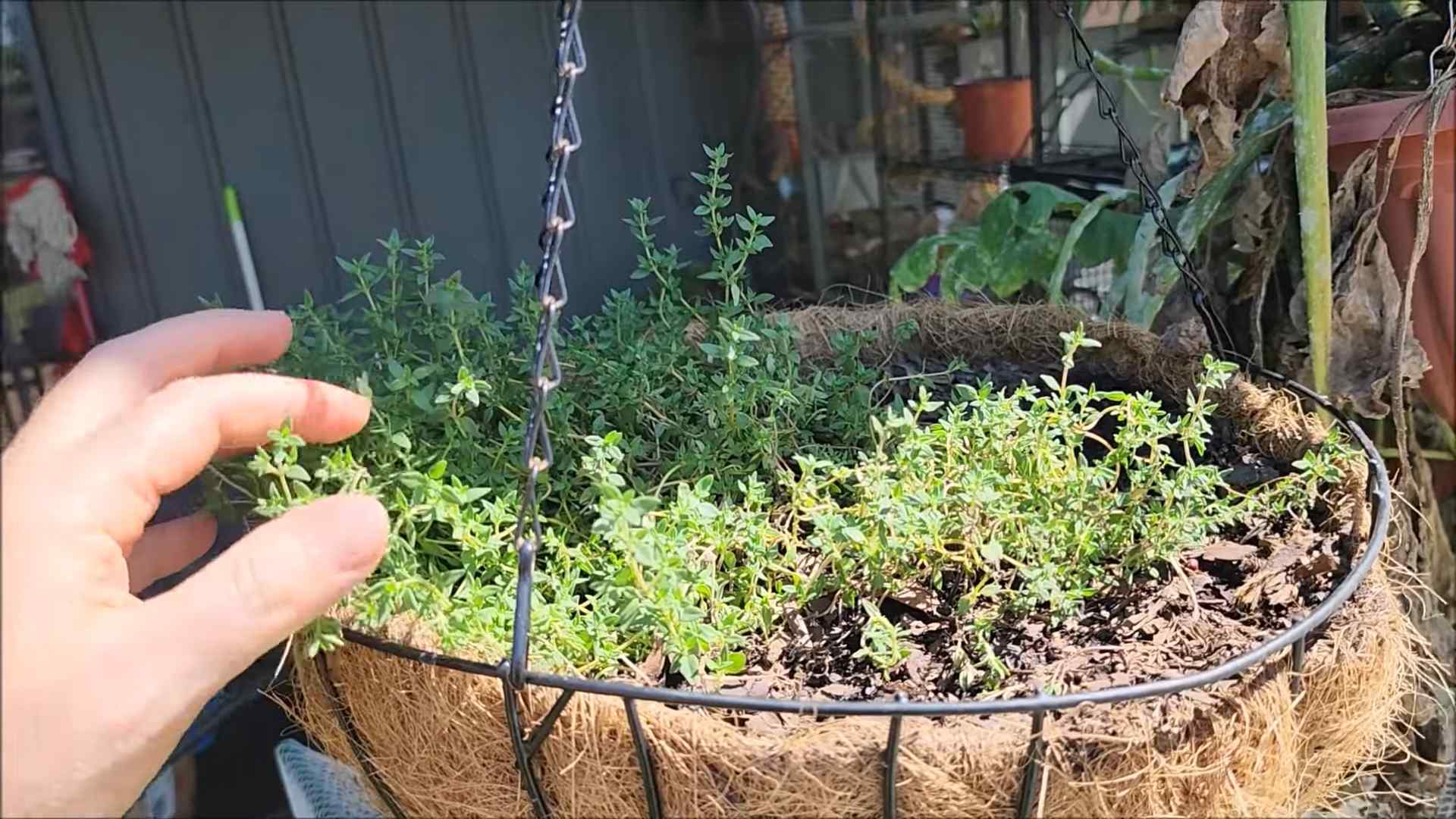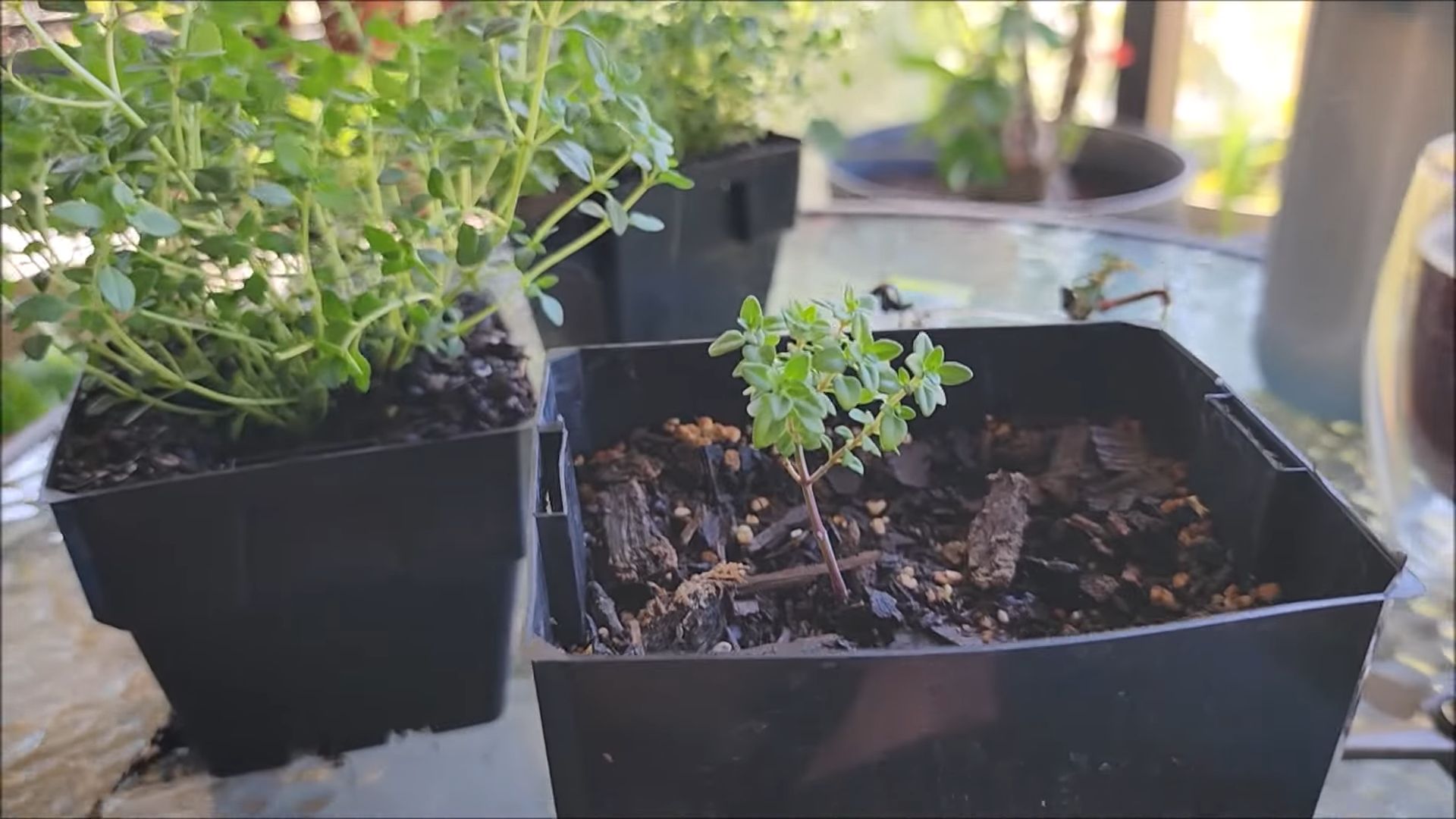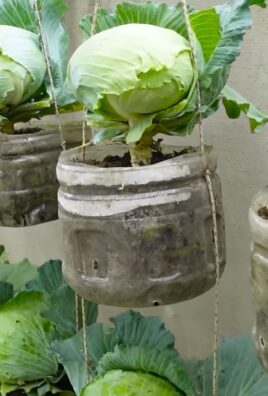Grow Thyme Indoors? Absolutely! Imagine stepping into your kitchen and snipping fresh, fragrant thyme to elevate your culinary creations. No more trips to the grocery store or settling for dried herbs that lack that vibrant, earthy punch. This isn’t just about convenience; it’s about bringing a touch of the Mediterranean into your home, year-round.
Thyme, with its rich history dating back to ancient Egypt where it was used for embalming, and Greece where it symbolized courage, has always been valued for its medicinal and culinary properties. For centuries, cultures around the world have cherished this herb, and now, you can easily cultivate it within the cozy confines of your own home.
But why should you learn to grow thyme indoors? Well, for starters, it’s incredibly rewarding! There’s something deeply satisfying about nurturing a plant from a tiny seedling to a thriving herb. Plus, having fresh thyme readily available means you can effortlessly enhance your favorite dishes, from roasted vegetables to savory stews. Beyond the culinary benefits, thyme also boasts air-purifying qualities, contributing to a healthier and more fragrant home environment. I’m excited to share some simple, effective DIY tricks and hacks that will have you harvesting your own thyme in no time!

Growing Thyme Indoors: A Beginner’s Guide to a Thriving Herb Garden
Okay, so you want to grow thyme indoors? Awesome! Fresh thyme is a game-changer in the kitchen, and having it readily available is seriously rewarding. Don’t worry if you’re a newbie – I’m here to walk you through everything you need to know to create a thriving little thyme haven inside your home. Let’s get started!
What You’ll Need: The Thyme-Growing Toolkit
Before we dive into the nitty-gritty, let’s gather our supplies. Having everything on hand will make the process smooth and enjoyable.
* Thyme Seeds or Seedlings: You can start from seeds (more budget-friendly but takes longer) or buy established seedlings (faster gratification!). I personally prefer starting from seedlings because I’m impatient.
* Well-Draining Pot: Choose a pot that’s at least 6 inches in diameter and has drainage holes. Thyme hates soggy roots! Terracotta pots are great because they allow the soil to breathe.
* Well-Draining Potting Mix: This is crucial! Regular garden soil is too heavy. Look for a potting mix specifically formulated for herbs or a mix of potting soil, perlite, and vermiculite.
* Grow Lights (Optional but Recommended): Especially if you don’t have a super sunny windowsill. Thyme needs a lot of light.
* Watering Can or Spray Bottle: For gentle watering.
* Small Shovel or Trowel: For planting.
* Pebbles or Gravel: To improve drainage in the pot (optional).
* Fertilizer (Optional): A balanced liquid fertilizer diluted to half strength can give your thyme a boost.
Planting Your Thyme: From Seed to Sprout (or Seedling to Success!)
This is where the magic happens! Whether you’re starting from seeds or seedlings, the planting process is pretty straightforward.
Starting from Seeds:
1. Prepare the Pot: Fill your pot with the well-draining potting mix, leaving about an inch of space at the top. Gently pat the soil down.
2. Sow the Seeds: Sprinkle the thyme seeds thinly over the surface of the soil. They’re tiny, so don’t overdo it!
3. Cover Lightly: Cover the seeds with a very thin layer of potting mix – just enough to barely cover them.
4. Water Gently: Use a spray bottle to mist the soil thoroughly. You want it moist, but not soaking wet.
5. Create a Humid Environment: Cover the pot with plastic wrap or a clear plastic bag to create a mini-greenhouse. This helps retain moisture and encourages germination.
6. Place in a Warm, Bright Spot: Put the pot in a warm location with indirect sunlight.
7. Monitor and Water: Check the soil daily and mist it whenever it starts to dry out.
8. Remove the Cover: Once the seedlings emerge (usually in 14-21 days), remove the plastic wrap or bag.
9. Thin the Seedlings: Once the seedlings have a few sets of true leaves, thin them out so that they’re spaced about 2-3 inches apart. This gives them room to grow.
Starting from Seedlings:
1. Prepare the Pot: Fill your pot with the well-draining potting mix, leaving about an inch of space at the top. Gently pat the soil down.
2. Create a Hole: Dig a hole in the center of the pot that’s large enough to accommodate the root ball of your thyme seedling.
3. Remove the Seedling: Gently remove the thyme seedling from its nursery container. If the roots are tightly packed, gently loosen them with your fingers.
4. Plant the Seedling: Place the seedling in the hole and backfill with potting mix. Make sure the top of the root ball is level with the surrounding soil.
5. Water Thoroughly: Water the seedling thoroughly until water drains out of the bottom of the pot.
Light, Water, and Food: Keeping Your Thyme Happy
Now that your thyme is planted, it’s time to provide it with the right environment to thrive.
Light:
Thyme needs at least 6-8 hours of sunlight per day. A south-facing windowsill is ideal. If you don’t have enough natural light, supplement with grow lights. I’ve found that LED grow lights work really well and don’t use a ton of energy. Position the grow lights about 6-12 inches above the plants.
Watering:
Thyme is drought-tolerant, so it’s better to underwater than overwater. Allow the soil to dry out completely between waterings. When you do water, water deeply until water drains out of the bottom of the pot. Avoid getting the leaves wet, as this can lead to fungal diseases. I usually check the soil moisture by sticking my finger about an inch into the soil. If it feels dry, it’s time to water.
Fertilizing:
Thyme doesn’t need a lot of fertilizer. In fact, too much fertilizer can make it leggy and less flavorful. If you want to fertilize, use a balanced liquid fertilizer diluted to half strength every 2-3 weeks during the growing season (spring and summer). I personally don’t fertilize mine very often, and it still does great.
Pruning and Harvesting: Encouraging Growth and Flavor
Pruning and harvesting are essential for keeping your thyme plant healthy and productive.
Pruning:
Regular pruning encourages bushier growth and prevents the plant from becoming leggy. Pinch back the tips of the stems regularly, especially when the plant is young. You can also prune away any dead or yellowing leaves.
Harvesting:
You can start harvesting thyme once the plant is about 6 inches tall. Simply snip off stems with scissors or pruning shears. Harvest regularly to encourage new growth. The best time to harvest thyme is in the morning, after the dew has dried. The flavor is most intense at this time.
Drying Thyme:
If you have more thyme than you can use fresh, you can dry it for later use. To dry thyme, tie the stems together in small bundles and hang them upside down in a cool, dry, and well-ventilated place. You can also dry thyme in a dehydrator or in the oven on low heat. Once the thyme is completely dry, crumble the leaves and store them in an airtight container.
Troubleshooting: Common Thyme Problems and Solutions
Even with the best care, you might encounter some problems with your thyme plant. Here are some common issues and how to fix them:
* Yellowing Leaves: This can be caused by overwatering, underwatering, or nutrient deficiencies. Check the soil moisture and adjust your watering accordingly. If the soil is dry, water thoroughly. If the soil is soggy, allow it to dry out completely before watering again. If you suspect a nutrient deficiency, fertilize with a balanced liquid fertilizer.
* Leggy Growth: This is usually caused by insufficient light. Move your thyme plant to a sunnier location or supplement with grow lights.
* Fungal Diseases: These can be caused by overwatering or poor air circulation. Avoid getting the leaves wet when watering and ensure good air circulation around the plant. If you see signs of fungal disease, remove the affected leaves and treat the plant with a fungicide.
* Pests: Thyme is generally pest-resistant, but it can occasionally be infested with aphids or spider mites. If you see pests, spray the plant with insecticidal soap or neem oil.
Choosing the Right Thyme Variety
There are many different varieties of thyme, each with its own unique flavor and characteristics. Here are a few popular choices:
* Common Thyme (Thymus vulgaris): This is the most common type of thyme and has a classic thyme flavor.
* Lemon Thyme (Thymus citriodorus): This variety has a lemony scent and flavor. It’s great for adding a citrusy twist to your dishes.
* Creeping Thyme (Thymus serpyllum): This low-growing thyme is often used as a ground cover. It has a mild flavor and is great for adding to salads.
* Woolly Thyme (Thymus pseudolanuginosus): This thyme has fuzzy, gray-green leaves and a mild flavor. It’s often used as a ground cover or in rock gardens.
Repotting Your Thyme
Eventually, your thyme plant will outgrow its pot. When this happens, it’s time to repot it into a larger container. Choose a pot that’s 1-2 inches larger in diameter than the current pot. Gently remove the thyme plant from its current pot and loosen the roots. Place the plant in the new pot and backfill with fresh potting mix. Water thoroughly. I usually repot my thyme every year or two.
Enjoying Your

Conclusion
So, there you have it! Growing thyme indoors is not only achievable, but it’s also incredibly rewarding. Imagine having fresh, fragrant thyme readily available to elevate your culinary creations, no matter the season. Forget those sad, dried-out jars from the supermarket – with a little effort, you can cultivate your own thriving thyme plant right in your kitchen.
This DIY trick is a must-try for several compelling reasons. First and foremost, it’s incredibly cost-effective. A single packet of thyme seeds or a small starter plant is a fraction of the price of constantly buying fresh thyme from the grocery store. Second, it’s environmentally friendly. You’re reducing your carbon footprint by eliminating the need for transportation and packaging associated with store-bought herbs. Third, and perhaps most importantly, it’s incredibly satisfying. There’s something truly special about nurturing a plant from seed to harvest, and the delicious flavor of homegrown thyme is simply unmatched.
But the benefits don’t stop there. Growing thyme indoors also allows you to experiment with different varieties. While common thyme is a kitchen staple, consider exploring lemon thyme for its citrusy notes, creeping thyme for its delicate flavor and ground cover potential (if you decide to transplant it outdoors later), or even silver thyme for its beautiful variegated foliage. Each variety offers a unique flavor profile that can add a new dimension to your cooking.
Don’t be afraid to get creative with your setup, too. While a sunny windowsill is ideal, you can also use grow lights to supplement natural light, especially during the darker winter months. Consider using self-watering pots to simplify watering and prevent overwatering, a common mistake among beginner herb gardeners. You can even create a miniature herb garden by grouping several different herbs together in a single container.
Ready to embark on your indoor thyme-growing adventure? We encourage you to give this DIY trick a try. It’s easier than you might think, and the rewards are well worth the effort. Once you’ve harvested your first batch of fresh thyme, you’ll wonder why you didn’t start sooner.
We’re confident that you’ll find growing thyme indoors to be a delightful and fulfilling experience. But don’t just take our word for it – try it yourself and see the difference it makes in your cooking and your overall well-being.
And most importantly, we want to hear about your experience! Share your tips, tricks, and triumphs in the comments below. Let us know what varieties of thyme you’re growing, what challenges you’ve faced, and what delicious dishes you’ve created with your homegrown herbs. Your feedback will not only help other readers but also inspire us to continue sharing helpful gardening tips and tricks. So, get your hands dirty, embrace the joy of gardening, and discover the magic of growing thyme indoors!
Frequently Asked Questions (FAQ)
What kind of soil is best for growing thyme indoors?
Thyme thrives in well-draining soil. A mixture of potting soil, perlite, and vermiculite is ideal. This combination provides good drainage and aeration, preventing the roots from becoming waterlogged. Avoid using garden soil, as it can be too heavy and compact for container gardening. You can also find specialized herb potting mixes at most garden centers, which are formulated to meet the specific needs of herbs like thyme.
How much sunlight does indoor thyme need?
Thyme needs at least six hours of direct sunlight per day to thrive. A south-facing windowsill is usually the best location. If you don’t have enough natural light, you can supplement with grow lights. Fluorescent or LED grow lights are both good options. Position the lights a few inches above the plants and keep them on for 12-14 hours per day. Rotate the plant regularly to ensure even light exposure on all sides.
How often should I water my indoor thyme plant?
Water thyme when the top inch of soil feels dry to the touch. Avoid overwatering, as this can lead to root rot. Ensure that the pot has drainage holes to allow excess water to escape. During the winter months, when the plant is not actively growing, you may need to water less frequently. A good rule of thumb is to check the soil moisture every few days and water only when necessary.
How do I harvest thyme from my indoor plant?
Harvest thyme by snipping off stems with scissors or pruning shears. Avoid cutting more than one-third of the plant at a time, as this can weaken it. The best time to harvest thyme is in the morning, after the dew has dried. This is when the essential oils are most concentrated, resulting in the best flavor. You can use the fresh thyme immediately or dry it for later use. To dry thyme, tie the stems together and hang them upside down in a cool, dry place.
What are some common problems when growing thyme indoors, and how can I fix them?
Some common problems include:
* **Yellowing leaves:** This can be caused by overwatering, underwatering, or nutrient deficiencies. Adjust your watering schedule and consider fertilizing with a balanced liquid fertilizer.
* **Leggy growth:** This is often due to insufficient light. Move the plant to a sunnier location or supplement with grow lights.
* **Pests:** Aphids, spider mites, and whiteflies can sometimes infest indoor thyme plants. Inspect your plants regularly and treat any infestations with insecticidal soap or neem oil.
* **Root rot:** This is caused by overwatering and poor drainage. Ensure that the pot has drainage holes and that the soil is well-draining. If root rot is severe, you may need to repot the plant in fresh soil.
Can I grow thyme from cuttings indoors?
Yes, growing thyme from cuttings is a relatively easy way to propagate new plants. Take a 4-6 inch cutting from a healthy thyme plant, removing the lower leaves. Dip the cut end in rooting hormone (optional) and plant it in a small pot filled with moist potting mix. Cover the pot with a plastic bag or humidity dome to create a humid environment. Keep the soil moist but not soggy, and place the cutting in a warm, bright location (but not direct sunlight). Roots should develop in a few weeks. Once the cutting has rooted, you can remove the plastic bag and transplant it into a larger pot.
How do I fertilize my indoor thyme plant?
Thyme is not a heavy feeder, but it will benefit from occasional fertilization. Use a balanced liquid fertilizer diluted to half strength. Fertilize every 2-4 weeks during the growing season (spring and summer). Avoid fertilizing during the winter months, when the plant is dormant. Over-fertilizing can lead to leggy growth and a less intense flavor.
What varieties of thyme are best for growing indoors?
Several varieties of thyme are well-suited for indoor growing, including:
* **Common thyme (Thymus vulgaris):** This is the most widely available and versatile variety, with a classic thyme flavor.
* **Lemon thyme (Thymus citriodorus):** This variety has a distinct lemon scent and flavor, making it a great addition to fish and poultry dishes.
* **Creeping thyme (Thymus serpyllum):** While often used as a ground cover outdoors, creeping thyme can also be grown indoors in hanging baskets or containers. It has a delicate flavor and is often used in teas.
* **Silver thyme (Thymus argenteus):** This variety is prized for its beautiful variegated foliage, which adds visual interest to any indoor herb garden. It has a milder flavor than common thyme.
Can I move my indoor thyme plant outdoors during the summer?
Yes, you can move your indoor thyme plant outdoors during the summer months, but it’s important to acclimate it gradually to avoid shocking the plant. Start by placing it in a shady location for a few hours each day, gradually increasing the amount of sunlight it receives over a week or two. Make sure the plant is protected from strong winds and heavy rain. Bring the plant back indoors before the first frost in the fall.
How long will my indoor thyme plant live?
With proper care, an indoor thyme plant can live for several years. Regular pruning, adequate sunlight, and well-draining soil are essential for its longevity. Repotting the plant every year or two can also help to keep it healthy and vigorous.




Leave a Comment